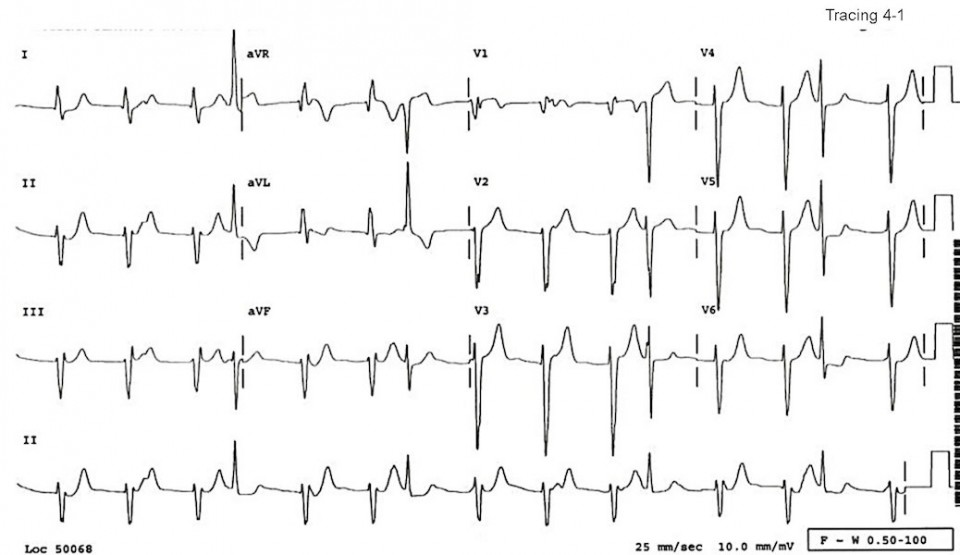The rhythm appears to be fascicular in origin because the QRS complex is different
from supraventricular beats. Its origin is likely the left anterior fascicle
because of the rightward and posterior terminal forces.
Retrograde conduction block is observed with V-A dissociation and
intermittent supraventricular capture beats.
The rhythm is due to digitalis toxicity which causes calcium overload in sarcoplasmic reticulum
leading to abnormal release to the cell triggering arrhythmia by means of
"delayed afterdepolarization" (DAD).
Most common arrhythmia in dig toxicity = PVCs. More specific, but not pathognomonic arrhythmias include
AF with slow or regular ventricular rate, junctional tachycardia, AT with block, and
bidirectional VT.
The bradyarrhythmias from digitalis toxocity is due to the main effect of digitalis itself
that slows down the AV nodal conduction and increase vagal tone.
RELATED:
CPVT
"Gain of function" in Ryanodine Receptor 2 (RyR2) or sarcoplasmic reticulum (SR) calcium release channel.
Resulted in too-much calcium release from SR in response to beta agonist or caffeine causing DAD.
In dig toxicity, calcium level in SR is up. In CPVT, calcium level in SR is normal but the receptor
lets calcium out too much.
Flecainide inhibits RyR2; recommended as a second line Tx after BB.

